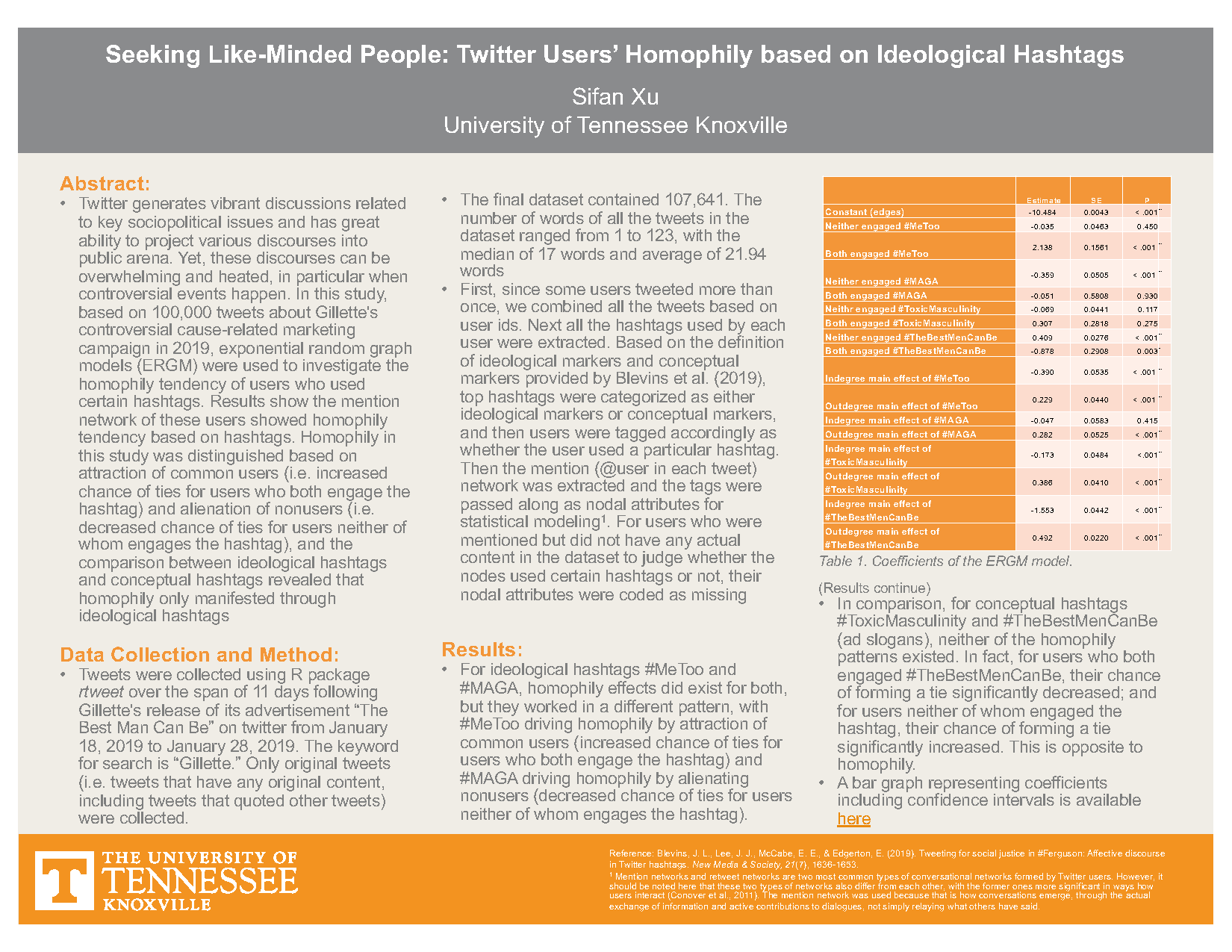
Seeking Like-Minded People: Twitter Users’ Homophily based on Ideological Hashtags
Sifan Xu
It is expected that online discourses around a controversial corporate social responsibility campaign will see both ideological hashtags (expressing ideological positions) and conceptual hashtags (e.g., campaign slogan). Ideological hashtags reveal users’ sociopolitical stance and position, usually influenced by and related to their chronically salient identities such as political affiliation, while conceptual hashtags do not. Furthermore, previous research has shown that Twitter users are more likely to establish ties with like-minded people (Aiello et al., 2012; Conover et al., 2011), providing convincing evidence that homophily patterns may manifest in Twitter users’ ideological hashtags when discussing a controversial marketing campaign. As a result, we speculate that ideological markers, compared to conceptual markers, play a pivotal role in driving formation of ties, because these hashtags are more related to person’s identity (Jackson & Foucault Welles, 2015; Kuo, 2016). To that end, we investigated whether homophily patterns based on hashtags exist in a Twitter mention network in a high-profile controversial event—Gillette’s The Best Men Can Be campaign.
We proposed the following key research question: Does ties formation based on ideological hashtags vs. conceptual hashtags differ? We hypothesized that ideological hashtags have homophily effects among social media (H1) and that ideological hashtags have greater ability to predict homophily than conceptual hashtags do (H2).
Based on the mention network of Gillette’s controversial campaign extracted from 100,000 tweets, we identified two prominent ideological markers, #MeToo and #MAGA, and two prominent conceptual markers, #ToxicMasculinity and #TheBestMenCanBe (the campaign slogans), to test whether users who engaged the same hashtag showed homophily in the mention network.
Differential homophily showed that when both users engaged #MeToo, their likelihood of forming a tie significantly increased. For #MAGA, when neither users engaged the hashtag, their chance of having a tie significantly decreased, but both users’ engagement with the hashtag did not have a significant effect. Therefore, homophily effects did exist for both hashtags, but they worked in a different pattern, with #MeToo driving homophily by attraction of common users (increased chance of ties for users who both engage the hashtag) and #MAGA driving homophily by alienating nonusers (decreased chance of ties for users neither of whom engages the hashtag).
In comparison, conceptual hashtags did not show homophily. In fact, for users who both engaged #TheBestMenCanBe, their chance of forming a tie significantly decreased; and for users neither of whom engaged the hashtag, their chance of forming a tie significantly increased. This is opposite to homophily. In short, ideological hashtags drove homophily of network formation, though the patterns differ. Conceptual hashtags, in comparison, did not have homophily effects on network formation. The results of the study provide further evidence of homophily in socially mediated space, and also provide important insights on the role of hashtags used by Twitter users in expressing personal identities and fostering identification with other users. 
← Schedule

